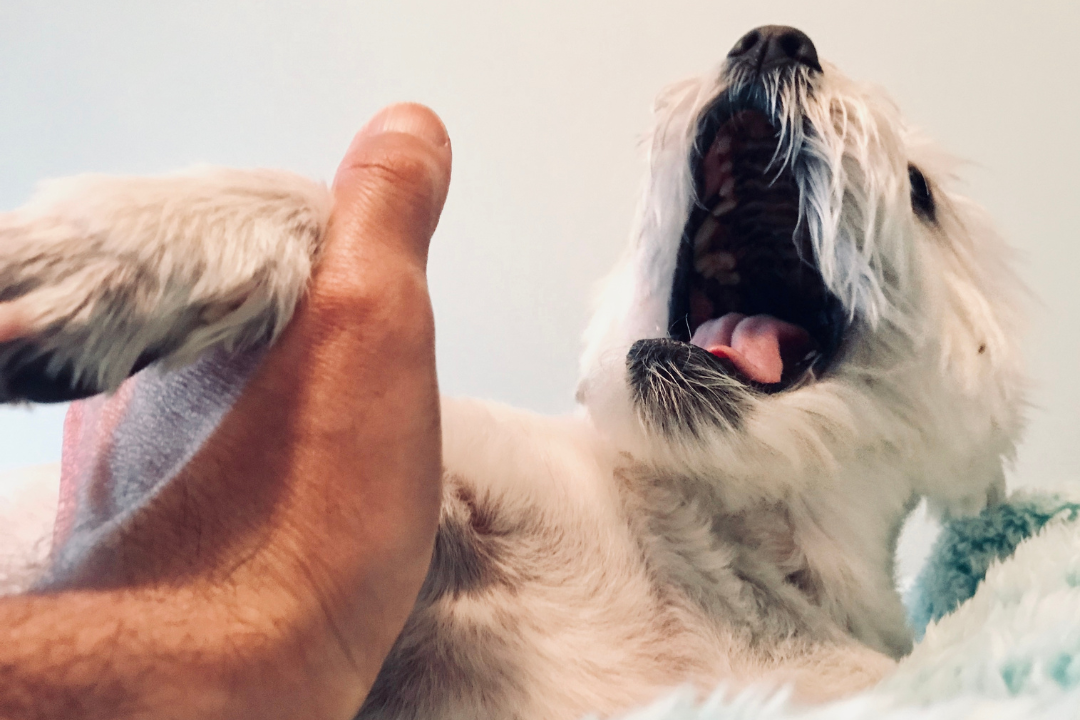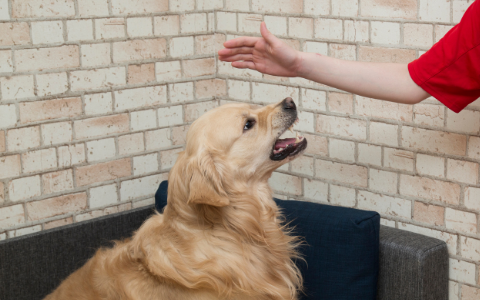No Products in the Cart
7 Signs Your Dog Is in Pain: Watch for These Cues

As loving pet parents, we don't want our dogs to suffer. Pain is not normal, and no one, human or animal, should live with pain when there is a solution.
For us humans, it's easier to share that we are in pain because we can speak and tell someone about it. Even babies might manifest their pain through cries and screams. However, it is much more challenging for our beloved companions to express their pain and for us to know that they are in pain.
Let's review seven signs that you should watch for which could signal your pet is in pain.
1. Mobility problems
When your dog's mobility is impaired, signs are often easy to spot: stiffness, limping, difficulty walking, or climbing stairs. These signs can indicate pain from an acute injury (for example, a cut or torn ACL) or a chronic problem like osteoarthritis.
Also Read: How Does Omega-3 Fatty Acids Help Dogs with Osteoarthritis?
It will usually be signs of osteoarticular tissues (bones, joints, or muscles) damage and inflammation. Your vet will probably give your dog NSAIDs (antinflammatory) and might give you supplements.
2. Aggressiveness or antisocial behavior
When an animal is in pain, they might feel vulnerable. Our pets, especially cats, are hunters and prey on wildlife by nature. Although our cats and dogs live in a civilized environment, some of their wild instincts stay present. So, when they are hurt or feel diminished, they use aggressiveness.
If your dog or cat suddenly becomes aggressive, be gentle and calm with them. Check if there is something in their environment that could have hurt them. Examples include things they might have eaten, objects, people, and other animals.

Suppose your pet has a brusque change in behavior. In that case, your thorough investigation of the environment of a suddenly aggressive pet will help you understand what might have happened and, most of all, help your veterinarian better understand and ass the situation.
Also Read: Is Turmeric (Curcumin) Helping Dogs With Osteoarthritis?
3. Unusual vocalization
Although signs of pain in pets are often subtle, sometimes it isn't, and they might be vocal. This fact is especially true for dogs. They might bark, yelp, growl or even howl.
If your pet starts making abnormal noises and you cannot identify its reason, check your pet and call your veterinarian. The same approach should be taken if the frequency of the vocalization increases with no identifiable cause.
4. Eating and drinking less or no more
Which dog wouldn't say yes to a treat or a little extra food? Not too many! We know our furry friends are often gluttons.
So if your pet, and especially dogs, are not eating their bowl correctly, you should pay attention. First, try to give them their favorite treat to check if they are being picky. Then, if it's a repeated behavior, you should call your veterinarian. Your dog tries to eat but can't seem to swallow? It might be dental or mouth pain.
Food is not the only way to tell a pet isn't doing well. Indeed, dogs and cats can also change their drinking habits. Often, decreased or increased water intake can hint that your pet is not feeling well and is in pain. In addition, some disease like diabetes or Cushing disease in dogs increases their thirst.

Fig 2 - Dog not eating his bowl
5. Excessive licking
When dogs and cats are healthy, they are meticulous about their grooming. But like many things in life, when it becomes excessive, it's not normal.

Fig 3 - Dog licking his paw
Also Read: Dog Hip dysplasia : Symptoms, Treatments and Solutions
6. Activity modifications
When pets remain in pain for long periods, they can become:
- apathetic, not playing as much, and sleeping more
- or they can become relentlessly active, not sleeping as much.
Apathy can result from loss of energy due to pain or diseases. Relentlessness is often due to anxiety and discomfort due to pain.
7. Swollen area and other body changes
Scientists use four symptoms when reading veterinary or human medicine books to describe the pain. A fun fact is that these terms come from the Antiquity period :
- Rubor: the inflamed area is red.
- Calor: The inflamed area is hot.
- Tumor: the inflamed area is swollen.
- Dolor: the inflamed area is painful.
Inflammation is your body's reaction to a bad thing ( including but not limited to infection but also a trauma or a hormonal disease). If you see one or more of the above signs, it most likely means your pet is in pain.















Leave a comment